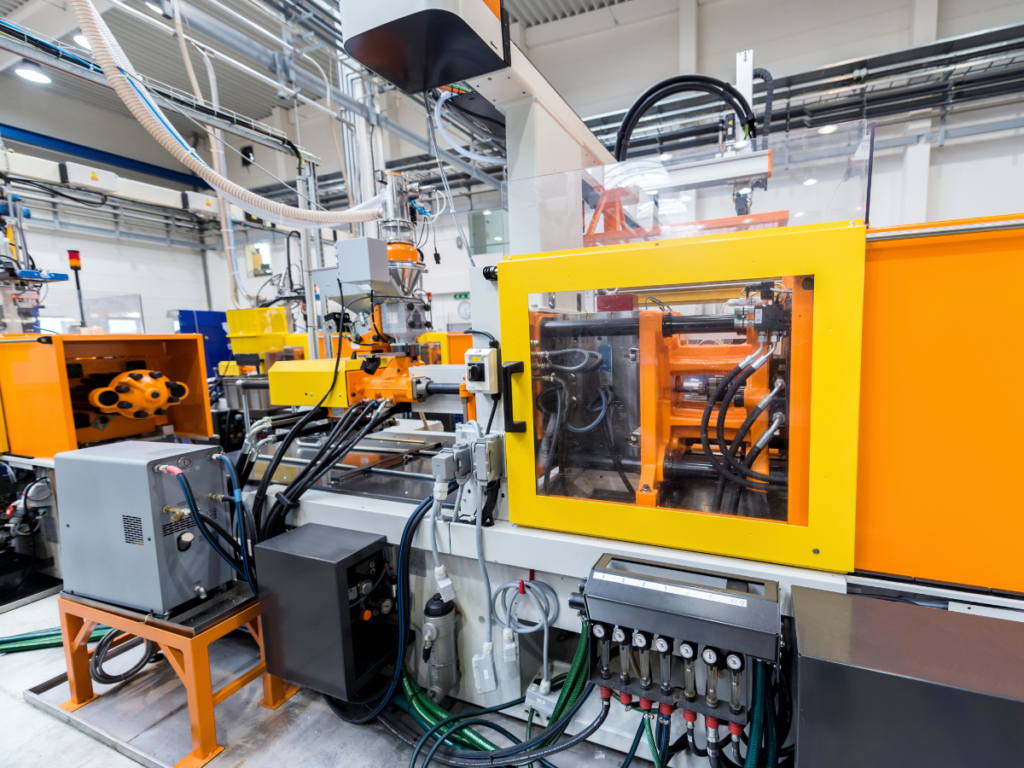Innovative Injection Molding for Medical Devices Supports Patient Care
Providing the best patient care is the number one priority in the healthcare industry and injection molding processes are constantly evolving to supply healthcare providers with high-quality medical devices that meet or exceed their patient care standards, while also allowing medical device manufacturers to remain cost efficient and relevant in a highly competitive industry.

Injection Molding for Medical Devices
The injection molding process involves injecting material into a mold; allowing it to cool, conform to the shape of the cavity and solidify; and then removing the finished product. Injection molding is an efficient and cost-effective method for mass producing medical devices at a low cost-per-part with high levels of precision, accuracy and quality, which is essential when producing products that will be used for patient care. Equally important, injection molding offers compatibility with FDA-approved materials and standards and the ability to achieve ISO 13485 compliance.
Injection molding is widely used throughout the medical device manufacturing industry to produce implantable devices; beakers, test tubes and other laboratory supplies; surgical and surgical prep equipment; dental instruments; drug delivery equipment and components; prosthetics and orthotics; respiratory devices such as inhalers and oxygen masks; syringes; catheters and tubing; diagnostic testing kit components; microfluidic devices; and a myriad of other medical devices used in direct or indirect patient care applications.
The Benefits of Injection Molding for Medical Device Manufacturing
Injection molding is attractive to medical device manufacturers because it provides several advantages, including:
- Compliance with Standards: When used with materials that adhere to FDA regulations, injection molding operations can create parts that comply with FDA guidelines and ISO standards for cleanliness and sterility of both the devices and the manufacturing process. In addition, many injection molded materials used to make medical devices are resistant to contaminants and can be sterilized, helping maintain healthcare industry standards, as well.
- Cost Efficiency: Injection molding is an excellent method for producing high volumes of the same product in a cost-effective way while still adhering to the quality and regulatory specifications required for medical devices.
- High-Volume Repeatability: Medical devices must be produced to tight tolerances as a few millimeters or microns can be the difference between a failed product and a functional one. The injection molding process offers manufacturers the ability to mass produce large volumes of devices with high levels of accuracy and precision and negligible variations from one component to the next.
Innovative Injection Molding Methods for Medical Manufacturing
Just as the healthcare industry itself is constantly changing and adapting, the injection molding process must also continue to evolve for medical device manufacturing. For this reason, in addition to traditional injection molding processes, there are several other injection molding techniques used by medical device manufacturers. Some of the most innovative practices include:
Insert molding/Over molding: Used to eliminate the need for assembly, insert or over molding produces a standard part but includes the insertion of a component. The component within the mold lets the chosen material set around it. This technique allows for the creation of a single unit with increased wear resistance and higher strength. It can also be used to provide color contrast within a single device.
Two-shot molding: This process permits a medical device to be molded and over molded within a single cycle. In the first step, the initial shape is molded, while step two involves injecting the remaining open space with a different texture or color. Two-shot molding combines two different materials into a single component to create complex, multi-color or multi-material medical components or devices and allows for bonds that are stronger than those produced by joining separate parts after molding.
Thin-wall molding: Medical devices are constantly becoming smaller to enhance patient care and comfort and one of the biggest changes is using injection molding to produce certain devices, such as wearables, catheters and endoscopes, with “thin walls.” Thin-wall molding uses standard injection molding equipment, but employs special plastics and materials that can retain structural integrity when made thinner.
Gas-assisted injection molding: Sometimes in traditional injection molding processes, sink marks occur, which are not only unsightly and potentially uncomfortable for patient use, but they can also create areas that are structurally weaker. Gas-assisted injection molding runs gas through channels that are built into the mold, which forces the resin tightly into the mold cavity, producing a smooth, comfortable part that is also structurally sound.
With the innovation and development of new injection molding techniques, injection molding processes will continue to be one of the most cost-effective ways to produce highly precise, repeatable medical devices that meet the necessary quality and regulatory specifications for use in the healthcare industry. Call DevLinks, a JHFOSTER company to learn how developments in injection molding can improve your medical device production and assist healthcare providers with the safest and highest-quality medical devices possible.
